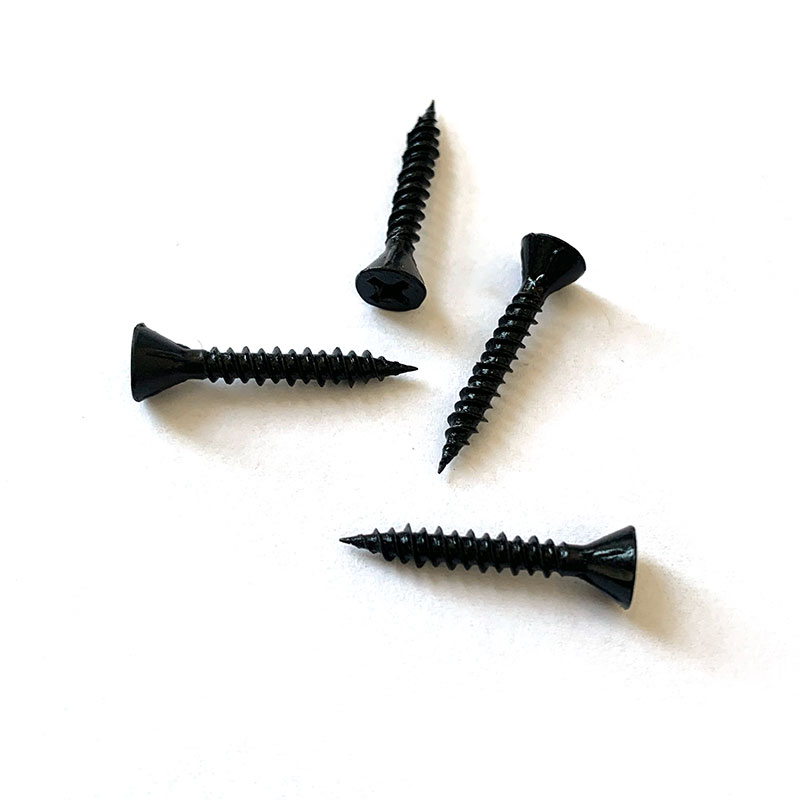Why Are Drywall Screws Essential for Your Home Improvement Projects?
2024-12-20
When it comes to home improvement, especially for tasks like installing drywall, one might not immediately think of the importance of screws. However, the drywall screw is an often-overlooked hero in construction and DIY projects. But what makes drywall screws so essential? Are they really the key to a strong and stable wall, or could any screw do the job?
In this blog, we'll explore the reasons why drywall screws are critical to drywall installation, what makes them different from other screws, and how to choose the right one for your next project.
What Are Drywall Screws?
Drywall screws are specialized fasteners designed to attach drywall (also known as gypsum board) to wood or metal studs during the construction of walls or ceilings. These screws are made from steel, often with a coating to prevent rust, and they come in various sizes and lengths, depending on the specific job at hand.
Drywall screws feature a sharp point for easy penetration into the drywall, as well as a self-tapping design that eliminates the need for pre-drilling. They are characterized by their thread pattern, which helps grip the drywall and studs securely, ensuring a strong and lasting connection.
Why Are Drywall Screws So Important?
Secure and Stable Attachment
The primary function of a drywall screw is to create a strong and stable attachment between the drywall sheets and the studs. Drywall is relatively lightweight and can be prone to shifting or sagging if not securely fastened. Drywall screws provide a firm hold, ensuring that the drywall remains securely in place, even in high-traffic or high-impact areas.
Unlike nails, which can loosen over time, screws create a more permanent bond, reducing the risk of popping nails and gaps between the drywall and studs. This stability is particularly important for areas like ceilings or walls that will support shelves, artwork, or other fixtures.
Prevents Damage to Drywall
One common mistake when using standard screws for drywall is the potential to damage the drywall surface. Drywall screws are specifically designed to minimize the risk of cracking or damaging the drywall when they’re driven into place. Their unique design allows them to be inserted deeply into the material without compromising the integrity of the drywall surface.
Additionally, the sharp point of a drywall screw ensures a clean and precise insertion, preventing unnecessary holes or imperfections in the drywall that might require extra repairs or touch-ups.
Better for Use with Power Tools
When installing drywall, time is often of the essence. Drywall screws are designed to be easily driven in using power drills or screwdrivers, which speeds up the installation process significantly compared to using nails or other fasteners. This is particularly useful for large-scale projects, such as finishing a whole room or a new home construction.
Drywall screws are also engineered to avoid over-driving into the drywall. They often have a bugle-shaped head, which allows the screw to be driven in without digging too deeply into the surface. This feature helps to prevent damage while ensuring a flush, even finish.
Corrosion Resistance
Drywall screws are frequently exposed to moisture (especially in kitchens, bathrooms, or basements), so they are often coated with materials like zinc or phosphate to resist rust and corrosion. This coating ensures that the screws maintain their holding power over time, even in more humid environments. It also prevents rust stains from appearing on the drywall, preserving both the integrity of the screw and the appearance of the wall.
Versatility for Different Materials
One of the most significant advantages of drywall screws is their versatility. They are designed to work with both wood and metal studs. Wood studs are typically found in most homes, but metal studs are becoming increasingly popular in modern construction. Drywall screws are manufactured in versions specifically for both materials, ensuring that they work perfectly regardless of the stud type.
For metal studs, drywall screws have fine threads that allow them to bite into metal, providing the same strong, stable attachment as with wood studs. The versatility of drywall screws makes them an all-around essential tool for any drywall installation project.
Choosing the Right Drywall Screw for Your Project
While all drywall screws share the same basic function, there are different types and sizes available, each suited to specific needs. Here are a few factors to consider when selecting drywall screws for your project:
Length of the Screw
The length of the drywall screw will depend on the thickness of your drywall and the type of studs you are attaching it to. For standard 1/2-inch drywall, screws around 1 1/4 inches are typically used. For thicker drywall, such as 5/8-inch sheets, you may need screws that are 1 5/8 inches or longer.
Coating and Material
As mentioned earlier, drywall screws often come with various coatings to resist rust and corrosion. If you're working in a moisture-prone area, make sure to choose screws that have a protective coating like zinc or phosphate. For more general applications, standard steel drywall screws will work just fine.
Thread Type
Drywall screws are available with either fine threads or coarse threads. Fine-thread screws are typically used for metal studs, while coarse-thread screws are designed for wood studs. Coarse-thread screws have better grip in wood, whereas fine-thread screws bite into the metal studs more easily.
Head Style
The bugle head of a drywall screw is the most common, as it allows the screw to sit flush with the surface of the drywall without damaging it. However, some projects may require a flat-head or pan-head screw, depending on the type of finish you want to achieve.
Common Mistakes to Avoid
- Over-tightening the screws: Over-driving drywall screws can lead to dimpling or even breaking the drywall surface. Use a power drill with a clutch to avoid this.
- Incorrect screw length: Using screws that are too long or too short can lead to poor attachment, which could cause the drywall to sag or loosen over time.
- Not spacing screws correctly: Screws should be spaced 12 to 16 inches apart along the studs, depending on the type of drywall you’re using.
Conclusion: Why Drywall Screws Are the Best Choice for Drywall Installation
Drywall screws are an essential component in any drywall installation project, offering superior strength, durability, and ease of use compared to other fasteners. Whether you are a professional contractor or a DIY enthusiast, having the right screws can make all the difference in the stability and appearance of your walls and ceilings.
By choosing high-quality drywall screws that match the specific requirements of your project, you can ensure a long-lasting, secure installation that stands the test of time. So, next time you're tackling a drywall job, don’t underestimate the importance of drywall screws—they are the unsung heroes that keep your walls in place.



